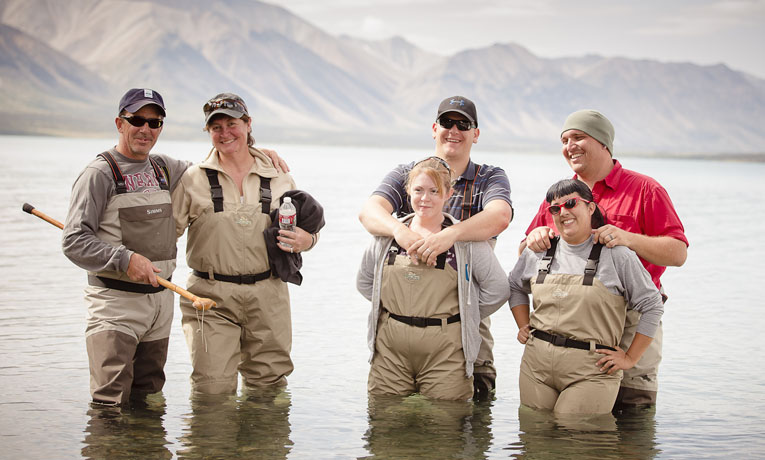By Karina Petersen, Samaritan’s Purse media relations coordinator
I recently spent some time at Samaritan Lodge Alaska, meeting couples that Samaritan’s Purse is ministering to as a part of our Operation Heal Our Patriots project. These couples have received some type of injury or wound while in military service.
Many of us quickly felt at ease with each other, so one day I felt comfortable casually asking Stu why he walked with a cane. “So … what, is it your knee?”
Stu looked at me, glanced at Linda, his wife, and chuckled. He then responded by listing his injuries from head to toe. It was an extensive list covering every part of his body except for maybe his right arm and right leg. He concluded, “So yeah, it’s my knee.”
I was mortified for having asked something so insensitive. He didn’t have an amputated limb, I didn’t see scars, and I didn’t notice anything mentally or emotionally wrong with him. Visibly, his cane was all I could see. Thankfully, Stu and Linda were gracious and just found humor in my question.
Later I heard all the nitty-gritty details of the incident that left his body with so many injuries and ailments. Stu was in a mountainous area of Afghanistan near the Pakistan border when he was hit with an improvised explosive device (IED). Saying his body was badly beaten is an understatement. His partner ended up using pieces of their Toyota Land Cruiser to make splints for Stu’s arm, leg, and neck. A Styrofoam cup was taped over his right eye to keep it from popping out. During the four-hour drive to medical care, Stu stopped breathing several times because his airways kept filling up with blood.
That all happened over six years ago, and yet he still deals with the after-effects—post-traumatic stress disorder (PTSD), traumatic brain injury, and lost vision in his right eye just to name a few. Actually, Stu claims he doesn’t have PTSD, but instead, post-traumatic stress. He said if you experience what he went through and don’t have post-traumatic stress, that’s when you have a disorder.
And then there was Scooter. I met him and his wife, Nadia, when we were hopping on a floatplane to fly to a neighboring lake to scope out a historical cabin site and have lunch on the shore. All I saw was a fun-loving couple and a go-getter. It wasn’t until a couple of hours later that I noticed Scooter was limping. He commented, “I said I was going caneless today, not painless!”
I learned that he regularly uses a cane, has a service dog for dealing with PTSD, and a whole host of other issues. Scooter revealed that he can have a breakdown if someone gets too close or suddenly walks up behind him. Scooter deals with several post-war injuries and medical conditions that we simply can’t see.
Mitchell and Amanda appeared to be just like any other young married couple. If I had met them anywhere else other than a retreat center for wounded heroes and their spouses, I would never have guessed that Mitchell suffers from post-war injuries.
Mitchell told me about his blackouts, a condition probably related to the after-effects of being hit by a mortar. He suffers from PTSD, traumatic brain injury, severe migraines, and has shrapnel in his shoulder and head. All of that, I couldn’t see.
Probably the man who took me by surprise the most was Shawn. I sat across from Shawn and his wife, Monica, at the dinner table one evening. The lighthearted conversation took a sharp turn when Shawn, without much prompting, opened up about the emotional scars he deals with on a daily basis.
He was an Army medic who had seen it all. Many men he was trying to save ended up dying in his arms. It took an emotional toll. All of a sudden, I was listening to Shawn talk about how he tried to take his own life. Just minutes before dinner, we were playing an enjoyable game of beanbag toss. Now, he was pouring out his inner turmoil to practically a complete stranger.
All of the couples I mentioned had both physical and emotional scars that were not easily visible. In order to move beyond first impressions, all it took was some time, interest, and a listening ear.
We don’t always “see” what’s going on with people, and we don’t always know what someone’s going through or what problems he or she is facing.
That’s why I encourage you to look beyond the surface and really try to see what’s not necessarily visible to the eye. God will put people in our paths as long as we are willing to seize the opportunity to serve others. Take the time to gain a better understanding of the wounds that are causing pain for a brother or sister. Be first of all a listener and then a prayer warrior as you discover how you can help others.
Your investment will reap abundant returns.








